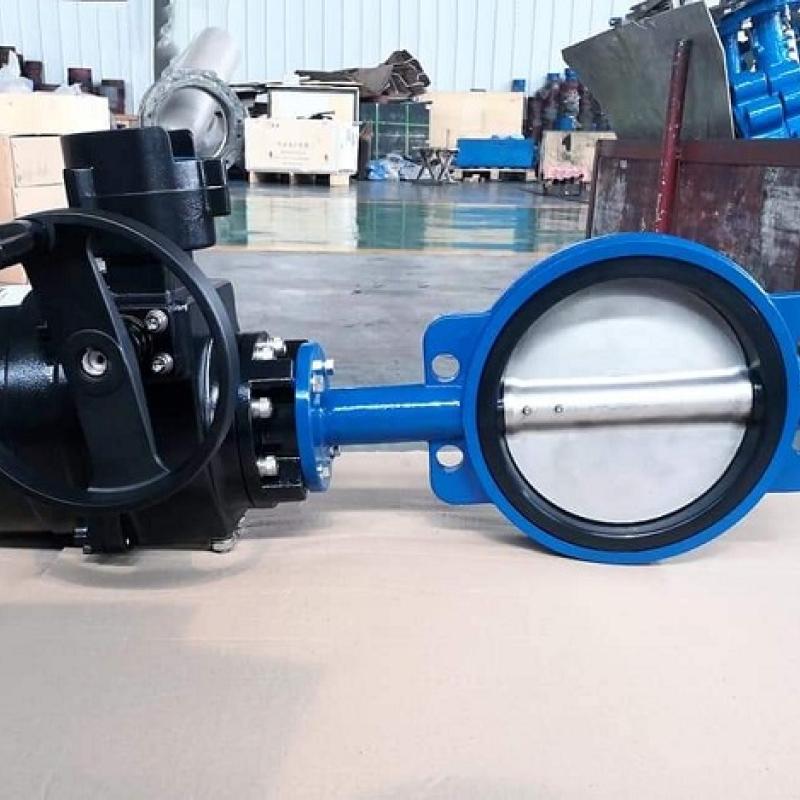Gate valves are characterised as having either a rising or a nonrising stem. rising stems offer a visual indication of valve function due to the fact the stem is connected to the gate such that the gate and stem upward push and lower together because the valve is operated. nonrising stem valves may additionally have a pointer threaded onto the upper end of the stem to suggest valve role, since the gate travels up or down the stem on the threads with out elevating or reducing the stem.
Contact Now
Gate valves normally have flanged ends which are drilled according to pipeline compatible flange dimensional standards. Gate valves are typically constructed from cast iron, ductile iron, cast carbon steel, gun metal, stainless steel, alloy steels, and forged steels.Gate valves are characterised as having either a rising or a nonrising stem. Rising stems provide a visual indication of valve position because the stem is attached to the gate such that the gate and stem rise and lower together as the valve is operated.
Contact Now
Butterfly valve offers economical,efficient,and reliable service for grooved end piping applications.It is easily installed with two grooved end couplings.
Contact Now
Gate valves normally have flanged ends which are drilled according to pipeline compatible flange dimensional standards.
Contact Now
Gate valves are characterised as having either a rising or a nonrising stem. Rising stems provide a visual indication of valve position because the stem is attached to the gate such that the gate and stem rise and lower together as the valve is operated. Nonrising stem valves may have a pointer threaded onto the upper end of the stem to indicate valve position, since the gate travels up or down the stem on the threads without raising or lowering the stem.
Contact Now
Size:DN25-DN1200 Material:Body:Cast Iron/Ductile Iron/Cast SteelDisc:DI+Ni/SS304/SS316/AL-BZ/CF3M/SS2205/SS2507Stem:SS416/SS304/SS316/17-PH/Monel K500Seat:EPDM/NBR/VITON/PTFE/HYPALONOperation:Handlever /Gearbox/Electric / Pneumatic Standard:Design Standard:EN 593 , MSS SP67 API 609 BS5155Inspection & Test:API 598 ISO 5208 EN 12266End Standard:ANSI B16.1 CL. 125LB /B16.5 CL.
Contact Now
Gate valves commonly have flanged ends which are drilled in step with pipeline compatible flange dimensional standards. gate valves are commonly made out of cast iron, ductile iron, cast carbon metallic, gun metallic, stainless-steel, alloy steels, and forged steels.Gate valves are characterised as having both a growing or a nonrising stem. growing stems provide a visual indication of valve role because the stem is connected to the gate such that the gate and stem upward thrust and decrease collectively as the valve is operated.
Contact Now
Gate valves normally have flanged ends which are drilled according to pipeline compatible flange dimensional standards.
Contact Now
Huge selection of substances, relevant for various medium.Small in length and light in weight, smooth installation and upkeep.it may be established anyplace needed.Simple and compact creation,Waft block is small.first rate law overall performance.Minimized running torque, electricity saving.Size:DN25-DN1200 Material:Body:Cast Iron/Ductile Iron/Cast SteelDisc:DI+Ni/SS304/SS316/AL-BZ/CF3M/SS2205/SS2507Stem:SS416/SS304/SS316/17-PH/Monel K500Seat:EPDM/NBR/VITON/PTFE/HYPALONOperation:Handlever /Gearbox/Electric / Pneumatic Standard:Design Standard:EN 593 , MSS SP67 API 6
Contact Now
Cast Iron / Ductile Iron metal sealed flanged gate valveDesign and manufacture according DIN3352Flanged PN16 according to EN1092-2/DIN 2501 PN10 &PN16Face to face according to EN558-1 series 14Test and inspection according EN12266Size DN50-DN600Working Pressure:PN10/PN16Working conditionsSuitbale for :Water,-10℃ to + 110℃ below 0℃ only for water with added antifreeze fluids
Contact Now




















